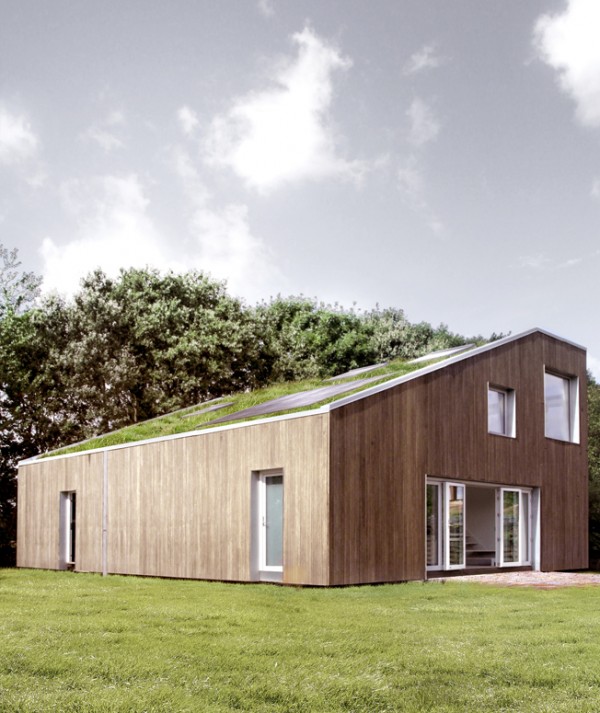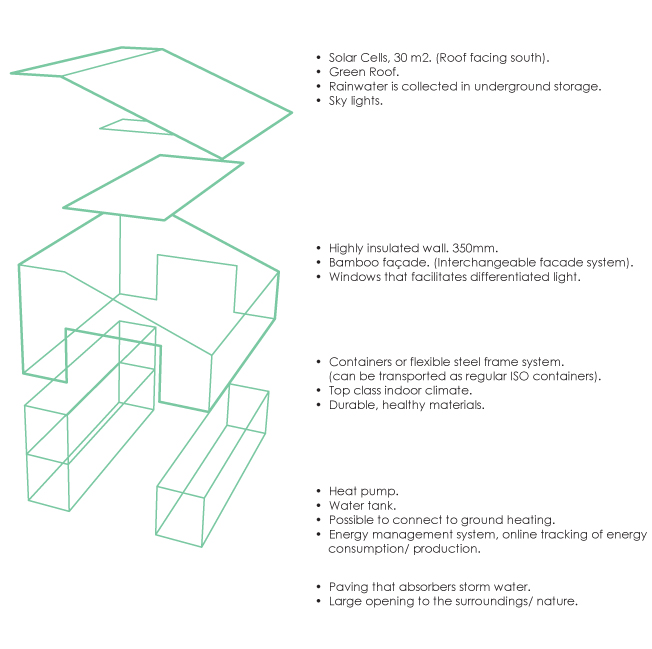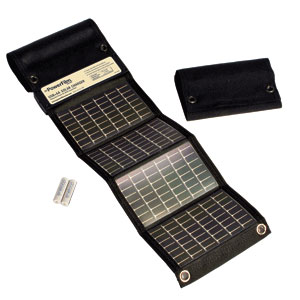
In this article:
- How do you prepare to live off-grid?
- Pros and cons of eliminating technology
- Types of off-grid shelter
- The basics of living off-grid
- How to transform your house into an off-grid household
As more people consider their environmental impact, many search for ways to reduce their carbon footprint. Taking your home off-grid is one of the most effective ways to reduce energy consumption. In some cases, it could also increase the value of your home.
Being off the grid means not being hooked up to utilities by wires, pipes, or cables. Off-grid homes get energy from renewable energy sources such as the sun and the wind.
“The grid” is the electrical grid, a network that delivers electrical power to properties. Living off-grid means being disconnected from the electrical grid. While it might make you think of primitive living, it’s not the case.
You can live in an off-grid residential home and grow your produce. When a building is off-grid, it has no connection to any utilities, and its power comes from alternative energy sources.
How do you prepare to live off-grid?
If you are a city dweller looking to transition your life off the grid, take time to prepare for a big move. Spend time planning where you want to live and how you plan to sustain yourself. Consider your sources of energy, food, and water.
Explore all resources that could help you to learn about off-grid living. They could be blogs, websites, and online courses.
Defining off-grid living
Living off-grid is living a completely self-sufficient lifestyle. It means you don’t rely on public food, housing, and utility sources.
Off-grid homes generate their electricity through alternative sources like solar and wind. An off-grid home is self-sufficient and low-tech when it comes to its energy needs.
Off-grid living also involves recycling your wastewater and growing your food. Many people who live off-grid also transition away from electronics and the Internet.
Choosing a location for off-grid living
First, you need to find a perfect location for your off-grid living. Living off-grid means that you need to find the land where you can build your new dwelling. If you want to be off-grid, find a remote location where you will not have to deal with rules and building codes.
It also means you could be miles away from the nearest road, highway, or hospital. But the upside is that you will need less money to buy your land and have lower property taxes.
Sustaining yourself
To sustain your life while living off-grid, you must get creative. One of the most common ways to provide for yourself is to grow your food. You can start your garden or greenhouse since you will not have access to grocery stores. Consider your climate when planning what fruits and vegetables to grow and how to conserve them.
You can also start growing your livestock to produce eggs and meat. It’s a good idea to have a combination of both, so you are not left without food if your crops don’t grow for some reason.
Learning how to live off-grid
Living off the grid means you could be hours away from the nearest hospital and essential services. Learning basic first aid skills and knowing how to fix your home could be crucial for your survival.
First aid
Learn first aid techniques that you will need in case of any emergency. Know how to treat basic cuts and resolve more severe problems when you might need to provide emergency care like CPR. Always have your First Aid Kit handy.
Basic carpentry
Learn basic carpentry to build your furniture, maintain your house and take care of repairs.
Basic mechanics
Learn basic mechanics to fix your vehicles so you know what to do if you need to be your mechanic. It’s imperative because you might need a few vehicles like cars and tractors to sustain your off-grid lifestyle.
Pros and cons of eliminating technology
There are many benefits to unplugging from technology. Disconnecting can help you to reduce stress and anxiety. Most people get calls and emails daily, besides news alerts and social media notifications. It’s tough to be present when you constantly have digital information.
Benefits of eliminating technology
Connecting with nature
When you cut technology from your life, you have more time for other activities. One of them is reconnecting with nature. You can spend time outdoors, go for a walk, or hike in the mountains without having to check your phone.
Connecting with yourself
While technology offers a way to stay connected with our friends and family, it can also make you feel lonely and lost. When you spend time away from electronic devices, you can reconnect with yourself and spend time reflecting on your life. Meditating and doing yoga can also help.
Downsides of eliminating technology
While living off-grid has many benefits, it also has some drawbacks. Think about how you plan to overcome them before making a leap of faith and changing your lifestyle.
Running out of essential supplies
There might always come a time when you run out of some essentials. When the weather is bad and you can’t reach the nearest store, you could be out of food or water for a few days.
To avoid this situation, always keep an eye on the weather and have a phone or radio system in place if you need emergency help. Ensure that your house has enough supplies. Always stock it with food, water, medicine, and other essentials.
Feeling lonely
Living off-grid means you might not have immediate access to your friends and family. While staying disconnected offers a break from the chaos and constant barrage of information, it can also make you feel isolated.
You can always catch up with your loved ones when you get a chance next time. Remember to always look at the bright side – you are living the life that most people never will experience.
Types of off-grid shelter
Based on your location, consider what type of off-grid housing you can choose. Your climate and location will dictate your options. Some building materials are more suitable for colder climates rather than warmer ones. You also need to consider the size of your land and other things you plan to have on your property.
Other factors that could affect your choice are the cost of building materials and transportation options. Keep in mind that you will also need to maintain your housing on your own.
Cabin
Cabin in the woods sounds like a romantic escape, but it can also be your off-grid housing. A house in the woods is an excellent option if you live in a cold forested area and need a place to keep you warm.
RV
An off-grid camper allows you to stay disconnected from power and water supplies. Unlike other types of off-grid housing, you can move RV to any place. It’s a great idea, as you can escape cold weather in winter and enjoy sunny destinations when your home city is freezing.
If you love to travel and do not feel like being tied to one place, an RV is the way to go.
Tiny home
The tiny house might be like any typical house, just a mini version. You would downsize and let go of any extra stuff you have to live in a tiny house. Shipping containers are one of the most popular building materials for building tiny homes.
Some of the biggest reasons people opt for tiny homes are the savings and the size. A smaller home lends itself to a more minimal life — you’re not tied down by a lot of stuff or a hefty mortgage payment.
Tiny homes are about 225 square feet versus a whopping 2,301 on average for a traditional house.
Earthship
Earthships are sustainable homes that are built with recycled or natural materials. They get power from renewable sources like wind and solar. Earthships collect their drinking water, treat their sewage, and grow their food.
Earthships are often built in remote areas and are designed to be self-sustainable.
The basics of living off-grid
If you are starting your off-grid life from zero, you have some essentials to think about. There are several things you can’t live without, and you need to consider your plan to approach these things.
Water collection
A reliable source of clean, potable water is essential for living off-grid. Before you choose the location for your off-grid home, ensure that it has access to a water source. You will need enough access to haul your home’s water if it doesn’t. Many off-grid homes also have a water-collection system place and a well.
Always filter your water because even seemingly clean water could be unsafe to drink. Treating your water before using it for cooking and drinking is also advisable.
Power generation system
Solar panels are a popular choice among off-gridders. But don’t forget to install a backup generator that can supply energy in an emergency. If you have the financial resources, consider adding a battery power storage system.
Although costly, the power generation system could save you in the most critical moment.
A battery energy storage system collects energy from the grid or a power plant and discharges it later to provide electricity.
Food
Growing your food is essential for your survival when living off-grid. While you can collect certain things like berries and plants, doing so is not always the safe choice, as some of them could be poisonous.
Cultivate a vegetable garden to avoid having to look for food in the natural environment. Learn how to store your food, as you will need your supplies to last for a long time.
If you have any livestock on the property, learn how to preserve meat and other animal products. Having a supply of non-perishable food is vital for emergencies.
Emergency supplies
Always have emergency supplies well-stocked. You will need a solar-powered speaker to avoid losing communication in an emergency. Keep emergency lights, batteries, and signaling tools handy.
Make sure you have a cooking and water purifying system at your fingertips. A First Aid Kit and basic medicines are essential because they can help you to survive before the help arrives.
How to transform your house into an off-grid household
While living off-grid implies that you need to move to a remote place, it’s not true. You can start living off the grid by converting your property into an off-grid home. Most properties are not designed to go off-grid, except for homes built in the last 3-5 years and can be energy efficient.
To move your home off the grid, you need to replace high-energy-consuming appliances with more efficient options. They include electrical and air conditioning systems, water heaters, and cooking appliances.
Replace the source of your home energy
Inspect your home wiring and consider going solar, geothermal, or wind power, depending on your location. Wind power might be the best option if you live in a windy place. And if you live in a sunny climate, consider installing rooftop solar panels.
Change your water heater
A water heater is essential to any home, and you need to find out how to make it more efficient. Consider moving your water heater to the roof or making it more energy efficient. If it is old, you could replace it with a new version like a solar one. The solar heaters are suitable only for warmer climates with plenty of sunshine. They are not ideal for snow or icy regions.
You can also change it to an inline gas or electric model. These devices are installed near the tap or shower and switch on when water begins to flow.
Replace air conditioning and heating
Air conditioning and heating systems consume a lot of electricity. If you are serious about living off-grid, you need to replace them with options that don’t rely on the grid.
You can change your air conditioner to an evaporative cooler if you live in a climate with low humidity. If you live in a place with high humidity, consider using fans, which need 95 percent less energy than a typical air conditioner. For the heating, switch to gas or a solid fuel-based central heater.
Invest in new kitchen appliances
Consider gas-powered kitchen appliances for your off-grid living. Try to cook your food outside on an open fire whenever possible. If you have a refrigerator older than ten years, replace it. New refrigerators have better insulation. They also consume less energy thanks to inverter-based refrigerator systems.
If you live in a cold climate, you do not need a refrigerator as you can store the food outside or in the basement.
Final thoughts
Off-grid homes have become popular in recent years. As more people are aware of their environmental impact, many seek to live a more sustainable way of life. Some also look for a quieter pace and a relaxed lifestyle that living off the grid offers.
While transitioning to the off-grid lifestyle is a big move, it has many rewards. If you transition your home off-grid, you might finally have the lifestyle you always wanted. And you can enjoy it while being a good steward of the environment.








